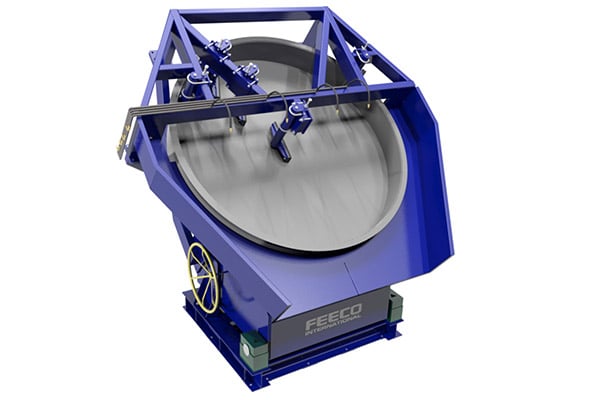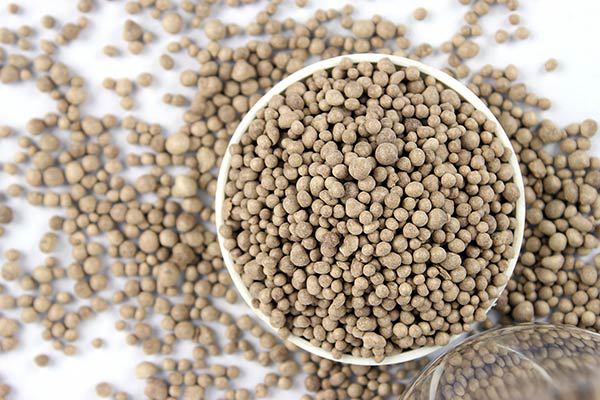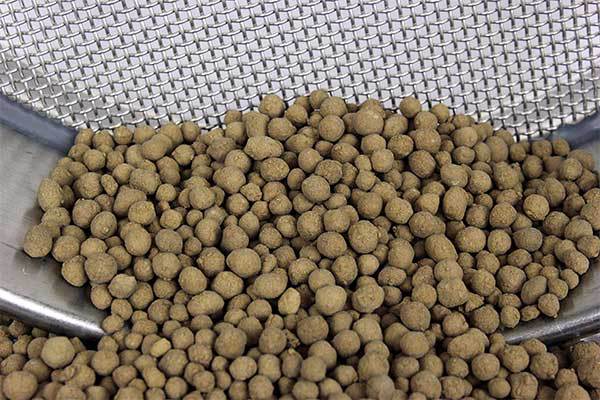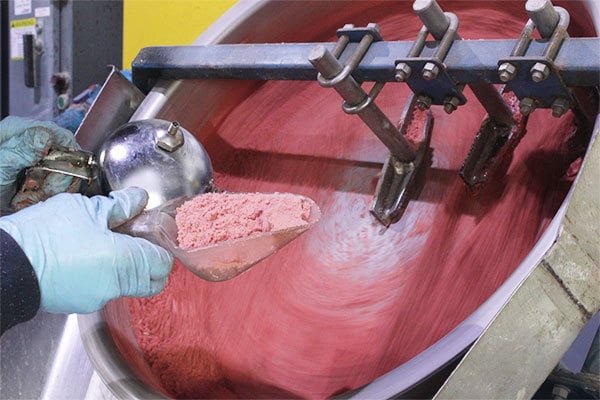The soil amendment industry is one of constantly rising competition; consumers are becoming more discerning, expecting more from the products they choose to put their money in, and the science around soil health is continually advancing, prompting demand for more specialized products.
The use of a disc pelletizer in the soil amendment industry has been steadily growing over time, thanks to the many benefits it can offer to both the production process and the end product. And as market demands continue to evolve, the disc pelletizer’s ability to meet these changing needs is seeing them emerge as the preferred granulation device in an increasing number of operations.
Here’s a look at why disc pelletizers are uniquely positioned to meet the soil amendment industry’s changing needs.
About the Disc Pelletizer
The disc pelletizer is a type of wet granulation/agitation agglomeration device used throughout a number of industries to convert fines into more easily handled, dust-free agglomerates.
Also known as a pan granulator, this equipment is a continuous device and consists of a rotating disc affixed at an angle to a stationary base. Fines are tumbled on the disc via the centrifugal force caused by the disc’s rotation. Along with a liquid binder, this action promotes formation and refinement of granules.
Several variables, including disc angle, speed, and more, can be adjusted during operation to respond to changes in production or feedstock.

3D Rendering of a FEECO Disc Pelletizer (Pan Granulator)
Alternative Equipment Options for Granulating Soil Amendments
A number of different types of agitation agglomeration equipment exist and can be used in the soil amendment industry. A brief overview of the most common alternatives is provided here.
The Rotary Granulator
The rotary granulator is a large, rotating cylinder in which fines are tumbled in the presence of a liquid binder to promote granule formation. The rotary drum is chosen for its high throughput and simple operation and because it is a “closed” system. This type of equipment yields rounded, semi-irregular granules.
The Pin Mixer
The pin mixer is a horizontal mixer made up of a single shaft fitted with pins that rotates at a high speed inside an enclosed trough. Intense rotational force, paired with the addition of a liquid binder, thoroughly mixes feed components and begins forming dense granules or “seed pellets.” This device is sometimes used alone to produce “micro pellets.”
Pugmill Mixer
The pugmill mixer, also known as a paddle mixer or pug mill, is a horizontal mixer made up of two counter-rotating shafts fitted with paddles set inside an enclosed u-shaped trough. A kneading and folding motion thoroughly mixes the solid and liquid feed components producing a de-dusted mixture of irregular granules.
Benefits of Disc Pelletizers Over Other Types of Agglomeration Equipment
While each device has its merits, the disc pelletizer offers several benefits that are particularly well suited to the soil amendment industry’s evolving needs.
Particle Size Control
One of the key reasons for which disc pelletizers are chosen for producing soil amendments is their flexibility in particle size control.
By adjusting different variables during production, operators can respond to changes in feed or processing conditions in order to continue producing on-size product. The ability to tightly control particle size is especially critical, given the strict standards to which soil amendment and fertilizer products are held in terms of particle sizing requirements.
In addition to monitoring and adjusting particle size in response to changes during production, the flexibility of a disc pelletizer also lets producers be more responsive and flexible in the particle sizes they can offer to their customers – a critical advantage in the constantly evolving demands of the market.
This level of flexibility is not available with any other type of equipment.
Enhanced Product Quality
For the same reasons, operators are able to influence and control the quality of product coming off of the disc pelletizer. By adjusting disc angle, speed, feed and spray locations, as well as other variables, operators can ensure product quality is still met despite changes in production or feed conditions.
The disc pelletizer also inherently produces a higher-quality granular product.
Premium Round Product
Another key reason for which the disc pelletizer is preferred is that it produces a highly refined pellet product. These granules are considered a premium product, offering minimal attrition and dust, and improved appearance, as is shown in the image below.

Synthetic gypsum pellets produced on a disc pelletizer in the FEECO Innovation Center
When combined with a pin mixer as a preconditioning step, the disc pelletizer produces spherical granules with an even higher level of uniformity in size, shape, and surface quality.
Opportunity for Improved Coating
While any granules can be coated, the effectiveness of the coating process is highly dependent on the shape, uniformity, and surface quality of granules. Disc pelletizers, especially when paired with pin mixers, produce a granular product that is ideally suited to uniform coating.
Coating granules is becoming an increasingly popular way to include value-added ingredients and transform a traditional product into a high-value, specialty product.
Significantly Less Dust
While other approaches to agglomeration also significantly reduce dust, the high sphericity of the pellets produced on a disc pelletizer are even less prone to attrition and dust.
Improved Flow Properties
Similarly, while other methods of agglomeration also produce a more flowable product, disc pelletizers have the potential to produce a product with enhanced flowability; while other factors can influence flowability, in general, the more round and refined the granule, the higher the flowability.

Limestone pellets produced on a disc pelletizer in the FEECO Innovation Center
Less Maintenance
While they still require routine upkeep, disc pelletizers boast the lowest level of maintenance requirements compared to other agglomeration equipment. That means less downtime for maintenance and repairs, and more uptime for production.
Is the disc pelletizer a fit for your soil amendment?
Disc pelletizers can bring a range of improvements to a soil amendment product, but they aren’t always a fit; not all materials respond favorably to agitation agglomeration, and in some cases, product goals may dictate a different type of equipment would suit the application better.
FEECO offers batch- and pilot-scale testing through our Innovation Center to assess the various options, confirm proof of product and proof of process, and to gather the data necessary for building commercial-scale equipment and systems.

Testing on a batch-scale disc pelletizer in the FEECO Innovation Center
Conclusion
The disc pelletizer is becoming the preferred agglomeration equipment of soil amendment producers for the many advantages it offers over other types of equipment. This includes improved particle size control, the creation of a premium product, opportunity for more uniform coating, less dust, and much more – all factors that are increasingly important in the changing soil amendment market.
As the preeminent source of agitation agglomeration expertise, equipment, systems, and support, FEECO Disc Pelletizers are used around the world to process fines into premium soil amendment products. In addition to our testing and manufacturing capabilities, we also offer a comprehensive parts and service program, which includes disc pelletizer training. For more information on the benefits our disc pelletizers could bring to your soil amendment product, contact us today!



